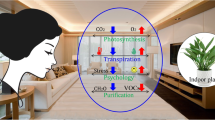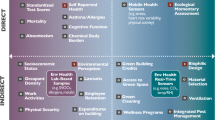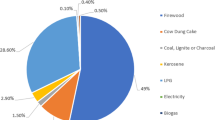Abstract
A thermal comfort field study has been carried out in five cities in the humid subtropical climate zone in China. The survey was performed in naturally ventilated and air-conditioned buildings during the summer season in 2006. There were 229 occupants from 111 buildings who participated in this study and 229 questionnaire responses were collected. Thermal acceptability assessment reveals that the indoor environment in naturally ventilated buildings could not meet the 80% acceptability criteria prescribed by ASHRAE Standard 55, and people tended to feel more comfortable in air-conditioned buildings with the air-conditioned occupants voting with higher acceptability (89%) than the naturally ventilated occupants (58%). The neutral temperatures in naturally ventilated and air-conditioned buildings were 28.3°C and 27.7°C, respectively. The range of accepted temperature in naturally ventilated buildings (25.0∼31.6°C) was wider than that in air-conditioned buildings (25.1∼30.3°C), which suggests that occupants in naturally ventilated buildings seemed to be more tolerant of higher temperatures. Preferred temperatures were 27.9°C and 27.3°C in naturally ventilated and air-conditioned buildings, respectively, both of which were 0.4°C cooler than neutral temperatures. This result suggests that people of hot climates may use words like “slightly cool” to describe their preferred thermal state. The relationship between draught sensation and indoor air velocity at different temperature ranges indicates that indoor air velocity had a significant influence over the occupants’ comfort sensation, and air velocities required by occupants increased with the increasing of operative temperatures. Thus, an effective way of natural ventilation which can create the preferred higher air movement is called for. Finally, the indoor set-point temperature of 26°C or even higher in air-conditioned buildings was confirmed as making people comfortable, which supports the regulation in China that in public and office buildings the set-point temperature of air-conditioning system should not be lower than 26°C.







Similar content being viewed by others
References
ASHRAE (1992) ASHRAE Standard 55–1992. Thermal environmental for human occupancy. ASHRAE, Atlanta
Busch JF (1990) Thermal responses to the Thai office environment. ASHRAE Trans 96(1):859–872
de Dear RJ, Auliciems A (1985) Validation of the predicted mean vote model of thermal comfort in six Australian field studies. ASHRAE Trans 91(2):452–468
de Dear RJ, Brager GS (1998) Developing an adaptive model of thermal comfort and preference. ASHRAE Trans 104(1):145–167
de Dear RJ, Brager GS (2002) Thermal comfort in naturally ventilated buildings: revisions to ASHRAE Standard 55. Energy Build 34:549–561
de Dear RJ, Leow KG, Foo SC (1991a) Thermal comfort in the humid tropics: field experiments in air-conditioned and naturally ventilated buildings in Singapore. Int J Biometeorol 34:259–265
de Dear RJ, Leow KG, Ameen A (1991b) Thermal comfort in the humid tropics-part 1:climate chamber experiments on temperature preferences in Singapore. ASHRAE Trans 97(1):874–879
Deng XR (1998) Subtropical Zone of China. Hubei Education Press, China. (In Chinese)
Fountain ME (1991) Laboratory studies of the effect of air movement on thermal comfort: a comparison and discussion of methods. ASHRAE Trans 97:863–873
Fanger PO (1970) Thermal comfort. Danish Technical Press, Copenhagen
Feng Y (2004) Thermal design standards for energy efficiency of residential buildings in hot summer/cold winter zones. Energy Build 36:1309–1312
Finney DJ (1971) Probit analysis. Cambridge University Press, Cambridge
Feriadi H, Wong NH (2004) Thermal comfort in naturally ventilated houses in Indonesia. Energy Build 36:614–626
Gagge AP, Nishi Y, Gonzalez RR (1972) Standard effective temperature-A single temperature index of temperature sensation and thermal discomfort. Symposium Thermal Comfort and Moderate Heat Stress. CIB Commission W45, Building Research Establishment, London
Hwang RL, Lin TP, Kuo NJ (2006) Field experiments on the thermal comfort in campus classrooms in Taiwan. Energy Build 38:53–62
Heidari S, Sharples S (2002) A comparative analysis of short-term and long-term thermal comfort surveys in Iran. Energy Build 34:607–614
Humphreys MA, Nicol JF (1998) Understanding the adaptive approach to thermal comfort. ASHRAE Trans 104(1):991–1004
ISO (1985) International Standard 7726. Thermal Environments - Specifications Relating to Appliances and Methods for Measuring Physical Characteristics of the Environment. Geneva, International Standards Organization
ISO (1994) International Standard 7730. Moderate thermal Environments-Determination of the PMV and PPD Indices and Specification of the Conditions for thermal Comfort. Geneva, International Standards Organisation
Karyono TH (1998) Report on thermal comfort and building energy studies in Jakarta-Indonesia. Build Environ 35:77–90
Kwok AG, Chun C (2003) Thermal comfort in Japanese schools. Solar Energy 74:245–252
Mui KWH, Chan WTD (2003) Adaptive comfort temperature model of air-conditioned building in Hong Kong. Build Environ 38:837–852
Nicol F (2004) Adaptive thermal comfort standards in the hot-humid tropics. Energy Build 36:628–637
Raja LA, Nicol JF, McCartney KJ, Humphreys MA (2001) Thermal comfort: use of controls in naturally ventilated buildings. Energy Build 33:235–244
Schiller GE (1990) A comparison of measured and predicted comfort in office buildings. ASHRAE Trans 96(1):609–622
Toftum J, Jorgensen AS, Fanger PO (1998) Upper limits for indoor air humidity to avoid uncomfortably humid skin. Energy Build 28:1–13
Wong NH, Khoo SS (2003) Thermal comfort in classrooms in tropical. Energy Build 35:337–351
Wong NH, Feriadi H, Lim PY, Tham KW, Sekhar C, Cheong KW (2002) Thermal comfort evaluation of naturally ventilated public housing in Singapore. Build Environ 37:1267–1277
Ye XJ, Zhou ZP, Lian ZW, Liu HM, Li CZ, Liu YM (2006) Field study of thermal environment and adaptive model in Shanghai. Indoor Air 16:320–326
Zhang G, Zheng C, Yang W, Zhang Q, Moschandreas DJ (2007) Thermal comfort investigation of naturally ventilated classrooms in a subtropical region. Indoor Built Environ 16(2):148–158
Acknowledgements
The work of this paper is financially supported by the National Natural Science Foundation of China (No.50478055), Asia-Link Project of European Community [CN/Asia-Link/012 (93520)], National Key Technology R&D program of China (2006BAJ02A05) and the Teaching and Research Award Program for Outstanding Young Teachers in Higher Education Institutions of MOE, PR China. The authors thank Mr. Tang kui, Mr. Guo Hongtao and Mr. Lu Rende for their assistance in the field survey work of this paper.
Author information
Authors and Affiliations
Corresponding author
Rights and permissions
About this article
Cite this article
Yang, W., Zhang, G. Thermal comfort in naturally ventilated and air-conditioned buildings in humid subtropical climate zone in China. Int J Biometeorol 52, 385–398 (2008). https://doi.org/10.1007/s00484-007-0133-4
Received:
Revised:
Accepted:
Published:
Issue Date:
DOI: https://doi.org/10.1007/s00484-007-0133-4




